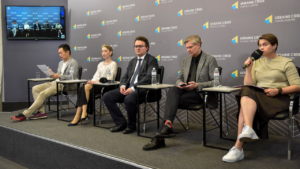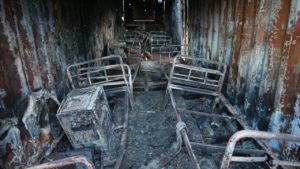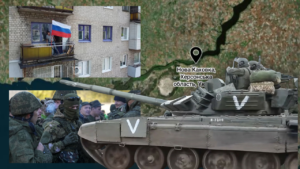Where Russia is holding Ukrainian captives — MIHR presented an interactive map at the OSCE
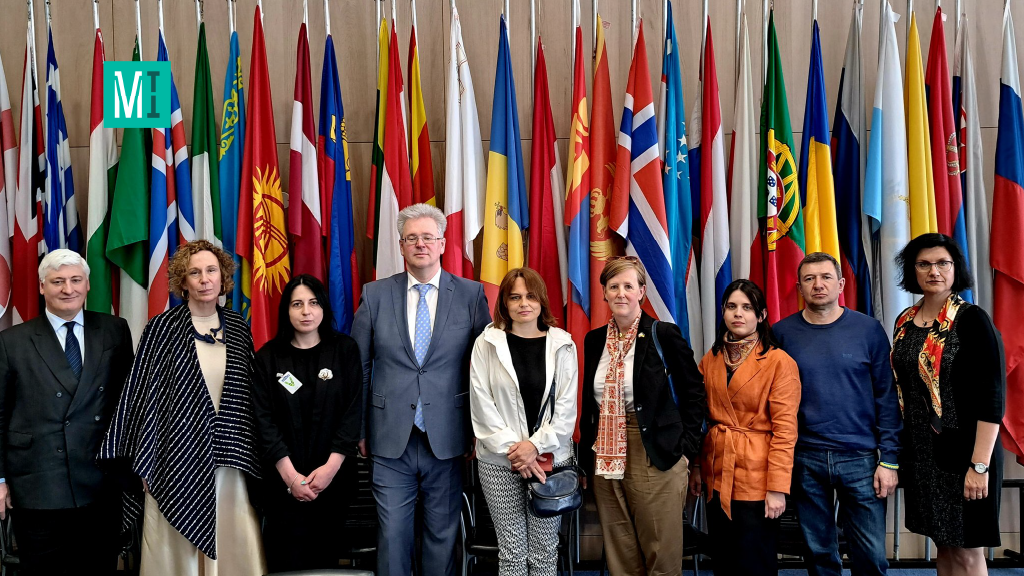
The Delegations of Ukraine, the United States, and the EU to the OSCE, together with the Media Initiative for Human Rights, have held an event, “VANISHED UNDER OCCUPATION: Where Russia is holding Ukrainian captives.” MIHR experts, witnesses, and survivors talked about abducting and arbitrary detention of Ukrainians.
As of early April 2023, MIHR identified 948 civilian hostages being held in the Russian Federation, Belarus, and occupied territories of Ukraine. However, the actual number could be at least 5–7 times higher. What happens to Ukrainians in captivity can be learned mainly from former prisoners. Russia has not been forthcoming with information about the detained civilians, withholding details from their families, Ukraine, and international organizations.
From the interviews with former prisoners of war and civilian hostages, MIHR managed to identify over 100 locations where Russia held or is still holding Ukrainians. On May 19, MIHR presented an interactive map with places of detention at the OSCE.
Participating in the event were MIHR Analyst Lyubov Smachylo, Head of documenting Anastasia Pantielieieva, wife of the captured volunteer Maryna Kostiuk, and former civilian hostage Viacheslav Zavalnyi.
At the beginning of the meeting, Yevhenii Tsymbaliuk, Permanent Representative of Ukraine to the International Organizations in Vienna, thanked the witnesses for their participation in the event, emphasizing that their testimonies are extremely important for responding to Russia’s crimes.
Tsymbaliuk reminded that Russia abducts volunteers in the territories it occupied: “Ordinary people are doing extraordinary things on the ground. If one decides to become a volunteer and help their community pass the occupation, it is a sign of Ukraine’s identity for Russia, which means these people are not afraid. Being not afraid means being non-loyal to the occupation. But being non-loyal also means being guilty in their eyes.”
EU Permanent Representative to the OSCE Rasa Ostrauskaite expressed confidence that attention to Russia’s aggression and crimes should not diminish:
“We need to stay focused on what is happening in Ukraine.”
Lyubov Smachylo expressed her gratitude to the participants for the opportunity for the fifth time to speak at the OSCE and to talk about human rights violations caused by Russia’s aggression against Ukraine.
Smachylo presented the map pointing out that the figure of nearly a thousand civilian hostages in Russian captivity is not final. The Analyst reminded:
“There is no mechanism for liberating civilians. Russia should release them unconditionally”.
Anastasia Pantielieieva provided the missions’ representatives at the OSCE with a detailed description of the locations where civilian hostages are held and the Russians’ logic behind abductions.
“I explore enforced disappearances in Ukraine’s south, which was occupied in the first days of the full-scale invasion. And Russian soldiers have kidnapped people ever since”, — Pantielieieva said.
“They set up torture chambers in every occupied town and city.”
According to her, certain civilian groups are eagerly pursued by Russian soldiers:
- Individuals with prior military training or experience,
- Volunteers who provide products and medicines to people in occupied areas,
- Activists who peacefully struggle on the occupied territory, those who stand on or spread Ukrainian symbols and literature, have Ukrainian blogs, and those who can influence public opinion,
- Local officials, teachers, and health workers who rejected the collaboration.
Anastasia Pantielieieva emphasized that abductions may also occur to those who don’t fall into these categories: “Russians believe that almost every civilian alerts the Ukrainian military to Russian movements or the weapons they employ. So they make every effort to capture as many as they can.”
Anastasia told the participants about several civilians who are currently in captivity, emphasizing that these are just a few names out of thousands:
- a social worker from Kherson Olha Cherniak,
- an entrepreneur from Henichesk Dmytro Zakharov,
- a driving instructor from the City of Oleshky Serhii Kotov,
- a volunteer and Spanish citizen Mariano García Calatayud,
- the mayor of Hola Prystan Oleksandr Babich,
- a worker of the National Nature Park in the Mykolaiv region Serhii Leibak,
- Ukrainian journalist Dmytro Khyliuk.

Viacheslav Zavalnyi shared his captivity story. He was captured by Russians while trying to evacuate his family from occupied Mariupol. They stopped him for inspection and found a map of the fighting in Mariupol on his phone in one of the telegram channels. This was enough to detain him. Viacheslav spent eight months in captivity.
“They shot near my head, they shot near my knees, they forced me to confess that I was a spy, a scout. They detained several other people.
In the field, we dug our graves because we were told we would be shot.
I ended up in Olenivka; there were six hundred of us there at first, but we grew to two thousand people in two weeks. Then a Russian officer showed up; he was hiding his face and told us that we would be exchanged.
They said that, for our safety, we must sit the way they tell us to. I later learned that the NKVD (the People’s Commissariat for Internal Affairs of the Soviet Union, responsible for the mass extrajudicial executions of citizens) called this prisoner transportation method a “yalynka” (spruce tree). Everyone is placed on the vehicle floor, you put your hands under the armpits of the person in front of you, and then your hands are handcuffed. This is done so that on every bump, the person’s weight clamps down on the handcuffs. We left at midnight and arrived at the Taganrog airfield in Russia in the morning. The cuffs on my hands were so tight that it took half an hour to remove them, and I did not feel my hands for about three months.
At the airfield, we got loaded into a transport plane, handcuffed and blindfolded, and flew away, as it turned out, to Kursk. We were loaded into the prisoner transport vehicles and thrown in like sacks, both civilians and military. On April 16, all these people ended up on the same floor of the Kursk detention center.
I’m drawing your attention to the names of these prisons because they have wardens, and they’re known. I believe that these people should be subjected to the same punishment as the heads of the concentration camps after World War II.
On May 6, we were all gathered and forced to get dressed under beatings. I was on the plane again and ended up in the city of Donskoy in the Tula region, correctional colony No. 1.
We were given very little food all summer.
We once counted 33 grains of buckwheat porridge.
At night, they would raise us after midnight and in the morning – it was to knock us out of sleep. They do everything to ensure that a person does not come out of there mentally normal. They would take us for a walk and then put us against the wall to beat us with pipes and sticks. They forced us to squat. Once, we squatted more than three thousand times.
Those who had bad teeth were treated with painkillers. To get a pill, you had to go up to the second floor, where there was a medical center. This road cost you more in terms of health than the problem you were having. They beat you on the way there and beat you on the way back. It was called “preventing treatment,” to make you want to go there less often,” — Viacheslav Zavalnyi said.
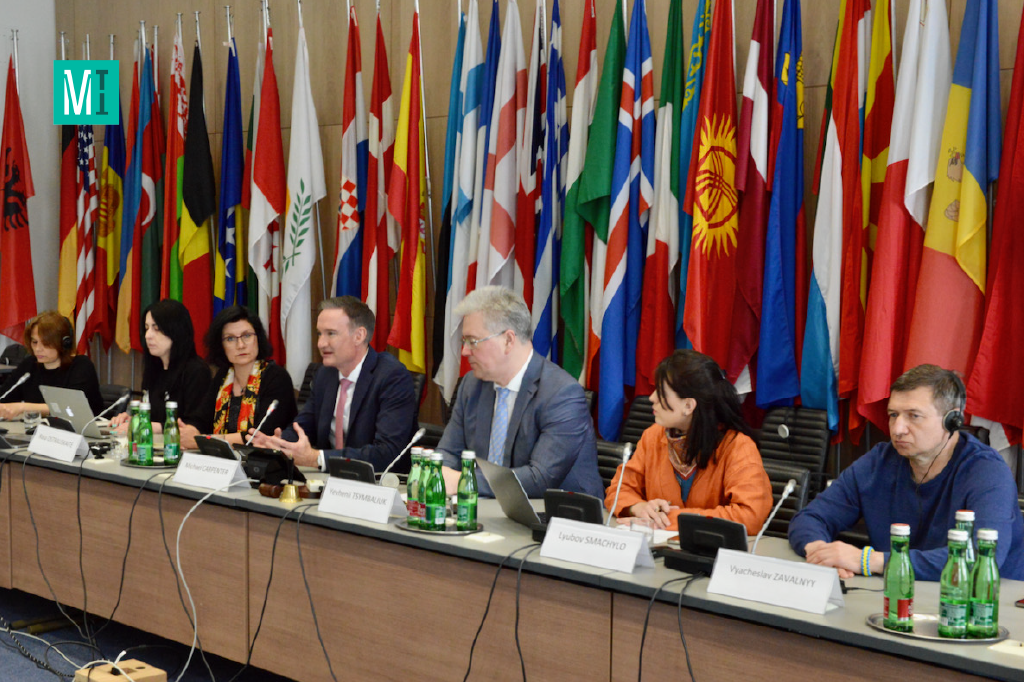
Maryna Kostiuk told about the abduction of her husband, Oleksandr (Sasha) Kostiuk, by Russians in the Sumy region. He has been in captivity for more than a year now, and his exact place of detention is unknown.
“On April 20 last year, I received a call from an unknown number, and I was frightened because I feared to hear the worst news. But I was told that my husband was alive, in captivity, and wasn’t crippled or wounded. The call was made by Oleksandr Sytnik, who shared a cell with Sasha. Sytnyk was exchanged on April 15, and he called all the relatives of the people he was in captivity with. He is the only one who gave me information about what happened to Sasha on March 5, the day he disappeared.
As a volunteer, Sasha was on his way to evacuate a family from the war zone in the Sumy region. While approaching the village, he came across a convoy of Russian vehicles. They stopped, searched, and took him with them for identification. He rode with them in the APC for about seven days, and it was very cold, and combat was ongoing. Sasha was afraid that he would be killed in that APC because he was completely unprotected, riding in the middle of the shelling. Then he was transferred to a filtration camp, where he stayed until March 17. There, he was taken for interrogation; four times he was taken to executions, and they shot near his head.
After this filtration camp, he was sent to Stary Oskol to Pre-Trial Detention Center No. 2, where he was kept for a long time. The conditions there were more or less adequate. They were not tortured there; civilians were separated from the military. But sometime in the fall, there was information that Sasha was transferred from Stary Oskol, but we do not know where.
I have no communication with him. I received three letters through the Red Cross. The letters are very similar – three lines:
“I am in captivity, I am alive, I hope to return home.”
Our story is one of thousands of stories. My husband is not a criminal, not a murderer. He is just an ordinary person who wanted to help others in a difficult moment for the country.” — told Maryna Kostiuk.
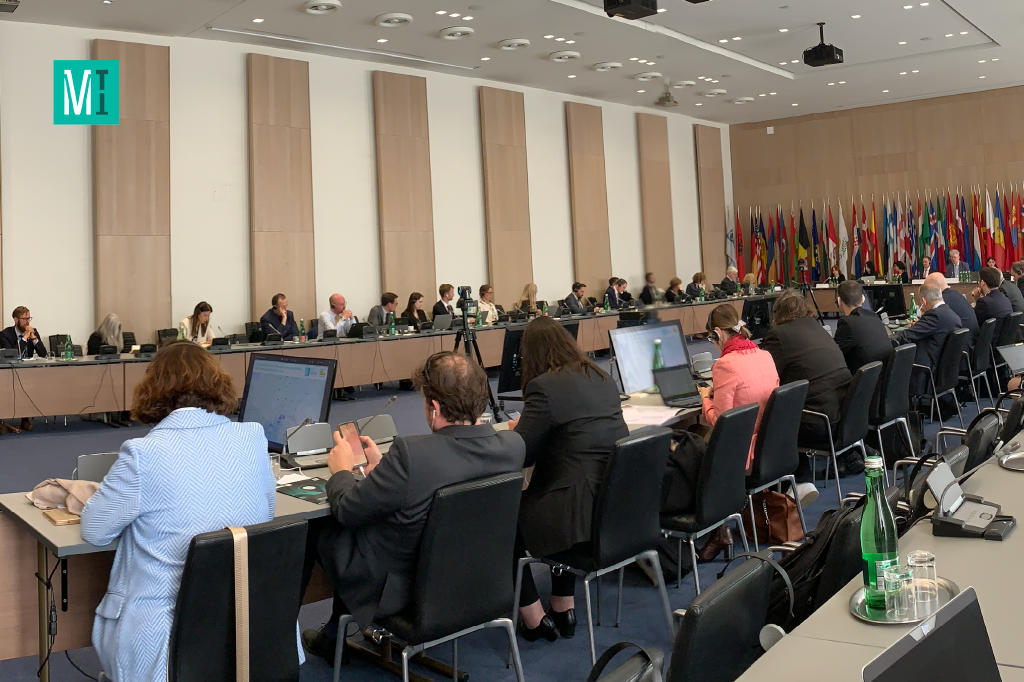
Michael Carpenter, US Ambassador to the OSCE, concluded the event with an address to the participants:
“I just have one final thought that I would like to conclude with. I have been struggling with the fact that many of us sit around the table with the Russian Federation every day. Sometimes some of you in this room may even say “hello” or “good morning” or exchange small talk with the Russians.
There’s one thing that’s come out of this briefing that I think is worth elevating. The fact that so many of these red dots (on the interactive map — MIHR) are on the territory of the Russian Federation. And, as Viacheslav said, there are civilians in these facilities who are beating Ukrainians each and every day. Probably right now. In fact, as we’re holding this event. When we think about war crimes, it’s not just crimes that are committed by soldiers on the battlefield. It’s not just that this brings out the bestial nature of the forces that are there on the ground. This is a systematic effort. By the Government of the Russian Federation in all of its manifestations. To target Ukrainians. And I hope we can remember that because sometimes it is easy for us as individuals to fall into what is most comfortable. We act as diplomats. Of course, we’re expected to get along with our colleagues. But remember that this is happening systematically, that it engages every element of the Russian Federation, including the members of the delegation here. Please do not forget that fact. Thank you.”
The event was held with the support of the Prague Civil Society Centre.



